Eight months is an amazing time in your baby’s development! Their curiosity soars as they reach for everything and develop new skills.
As a Montessori teacher, I’ve seen firsthand how the right activities can nurture this natural love of learning. Here are some ideas to keep your little one engaged and growing.
Fun And Easy Activities For 8 Month Old
The world is a fascinating place for your 8-month-old! Everything is new and exciting, and they’re eager to learn and explore. Here are 20 Montessori-inspired activities you can do at home to nurture your baby’s development:
Activity 1: Tummy Time with a Twist
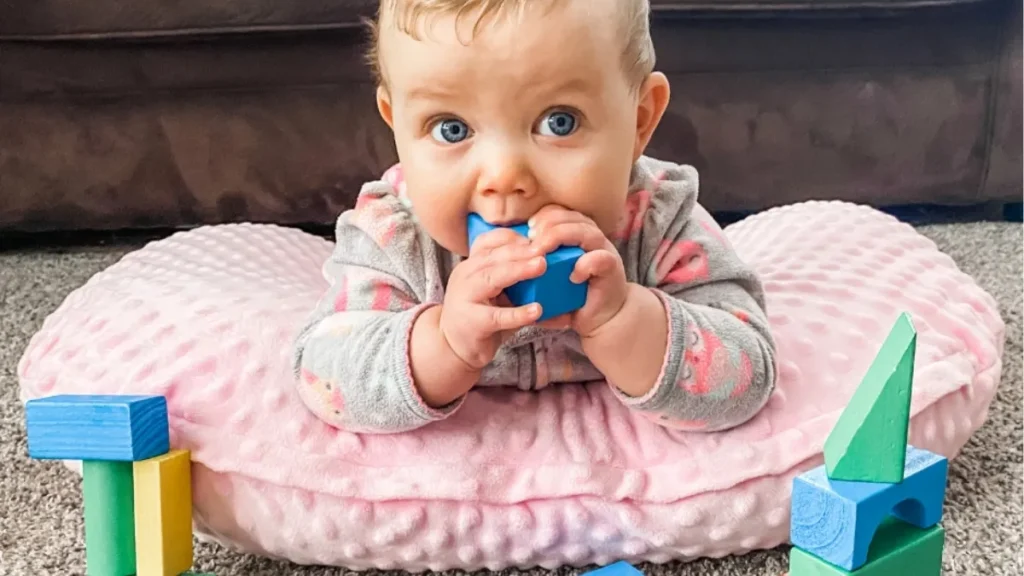
Age Group: 6 months – 1 year old
Materials: Play mat, colorful blanket/scarf
How to Perform: Tummy time is crucial for strengthening neck and back muscles. Place your baby on their tummy on a comfortable play mat. Drape a colorful blanket or scarf over their back, leaving their head uncovered. This variation on tummy time adds a touch of visual stimulation and encourages them to lift their head for a peek.
Area of Development: Gross motor skills, Visual development
Activity 2: Grasping and Rattling
Age Group: 6 months – 1 year old
Materials: Safe household objects (rattles, spoons, blocks)
How to Perform: Place a variety of safe household objects within your baby’s reach, like rattles, spoons, or blocks. Encourage them to reach for and grasp the objects. Shake a rattle in front of them to capture their attention and demonstrate how it makes noise. This simple activity strengthens hand-eye coordination and fine motor skills.
Area of Development: Hand-eye coordination, Fine motor skills
Activity 3: Crinkle Paper Fun
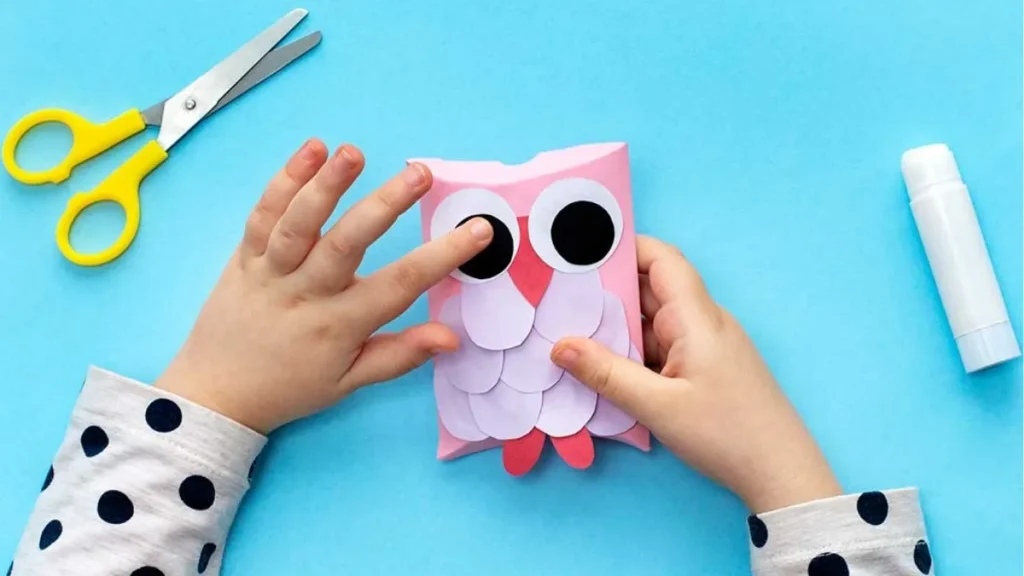
Age Group: 6 months – 1 year old
Materials: Tissue paper (various colors)
How to Perform: Crumple up colorful tissue paper into balls. Show your baby how to crinkle the paper in their hands and make noise. Let them loose with the crinkly paper for a fun sensory activity. This helps develop hand-eye coordination and fine motor skills while the crinkling sound stimulates their auditory senses.
Area of Development: Hand-eye coordination, Fine motor skills, Auditory development
Activity 4: Textured Basket
Age Group: 6 months – 1 year old
Materials: Basket, fabric scraps (different textures)
How to Perform: Fill a basket with fabric scraps in various textures, like felt, fleece, and satin. Let your baby reach into the basket and explore the different feels. This sensory activity introduces them to texture exploration and strengthens their sense of touch.
Area of Development: Sensory development, Tactile discrimination
Activity 5: Mirror, Mirror
Age Group: 6 months – 1 year old
Materials: Unbreakable mirror (secured to wall or on floor)
How to Perform: Secure an unbreakable mirror at your baby’s eye level, either on the wall or on the floor. Watch with delight as they discover their reflection. They may touch the mirror, reach out to their reflection, or giggle at the sight. Mirror play helps develop self-awareness and social skills by sparking their curiosity about themselves and their interactions with the world.
Area of Development: Self-awareness, Social skills
Activity 6: Big Book Look

Age Group: 6 months – 1 year old
Materials: Large, colorful children’s book
How to Perform: Choose a big, colorful children’s book with captivating pictures. Sit with your baby and turn the pages together, pointing out objects and making sound effects. This activity fosters a love for books and introduces basic language development. The bold colors and simple illustrations will hold their attention, while your narration helps connect words with pictures.
Area of Development: Language development, Literacy skills
Activity 7: Shaking Surprise
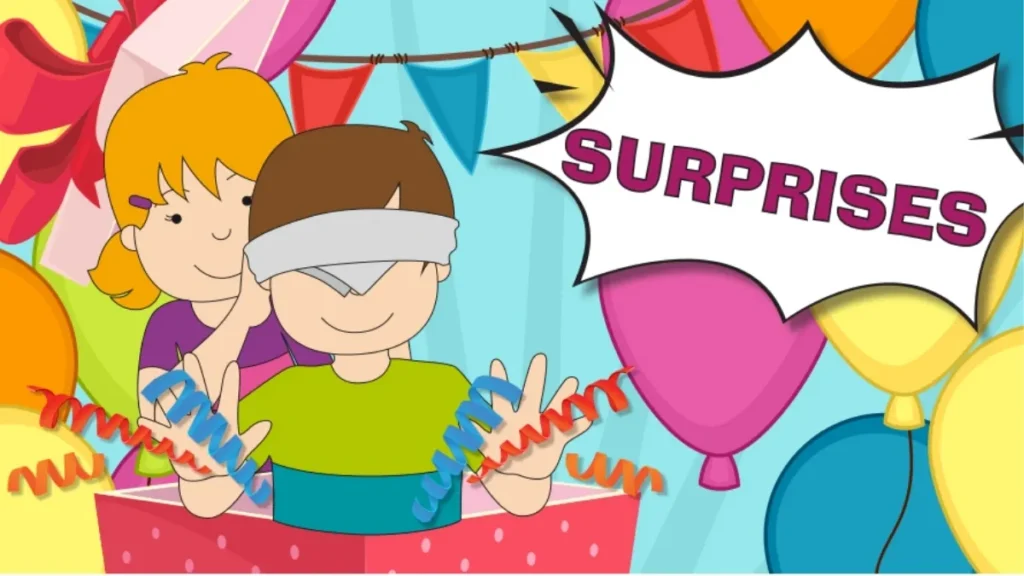
Age Group: 6 months – 1 year old
Materials: Small container (plastic bottle, canister), dry beans/pasta, objects that make noise (bells, buttons)
How to Perform: Fill a small container halfway with dry beans or pasta. Add a few small objects that make noise, like bells or buttons. Secure the lid tightly. Let your baby shake the container and listen to the rattles and shakes. This activity strengthens auditory processing and hand-eye coordination. The sound surprises and the cause-and-effect element will keep them engaged.
Area of Development: Auditory processing, Hand-eye coordination
Activity 8: Reaching for the Stars
Age Group: 6 months – 1 year old
Materials: Mobiles (bright colors, simple shapes)
How to Perform: Hang a mobile with bright colors and simple shapes above your baby’s crib or play area. They will be captivated by the gentle movement and contrasting colors. Reaching and grasping for the hanging objects strengthens hand-eye coordination and visual tracking skills.
Area of Development: Hand-eye coordination, Visual tracking skills
Activity 9: Playful Peek-a-Boo
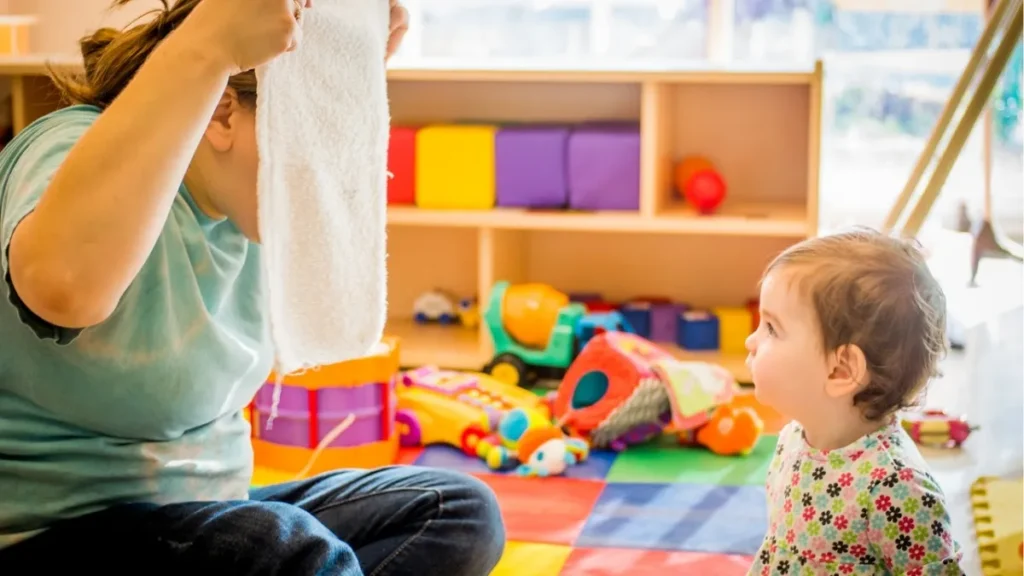
Age Group: 6 months – 1 year old
Materials: No materials needed!
How to Perform: Peek-a-boo is a timeless game that little ones love. Cover your face with your hands and say “peek-a-boo!” Then reveal your face and smile. This simple game strengthens social interaction and develops a sense of object permanence. Your baby will learn that even when things disappear for a moment, they can come back.
Area of Development: Social interaction, Object permanence
Activity 10: Tummy Time with a Mirror
Age Group: 6 months – 1 year old
Materials: Play mat, unbreakable mirror (small, safe for grabbing)
How to Perform: Place your baby on their tummy on a comfortable play mat. Put a small, unbreakable mirror in front of them, angled slightly upwards. This variation on tummy time encourages them to lift their head and neck even higher to see their reflection in the mirror.
Area of Development: Gross motor skills, Neck and back strengthening
Activity 11: Shaking Teethers
Age Group: 6 months – 1 year old
Materials: Teethers (various textures), ribbon
How to Perform: Tie a ribbon through two or three teethers with different textures. Let your baby hold the ribbon and shake the teethers together. This activity strengthens grasping skills and hand-eye coordination, while the different textures soothe teething gums. The bright colors and the ability to control the shaking will keep them interested.
Area of Development: Grasping skills, Hand-eye coordination
Activity 12: Cause and Effect Play (Container)
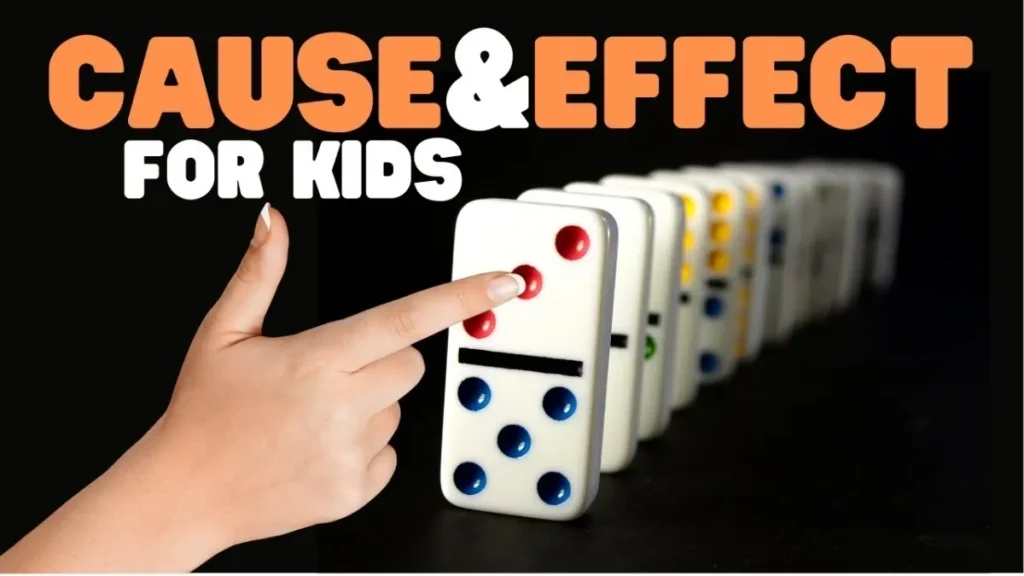
Age Group: 6 months – 1 year old
Materials: Empty container with lid
How to Perform: Find an empty container with a lid that your child can easily open and close. Show them how to put the lid on and take it off. You can also put a small object inside the container and demonstrate how to take it out. This activity introduces basic cause and effect and strengthens hand-eye coordination. They will learn that their actions can cause things to happen.
Area of Development: Cause and effect, Hand-eye coordination
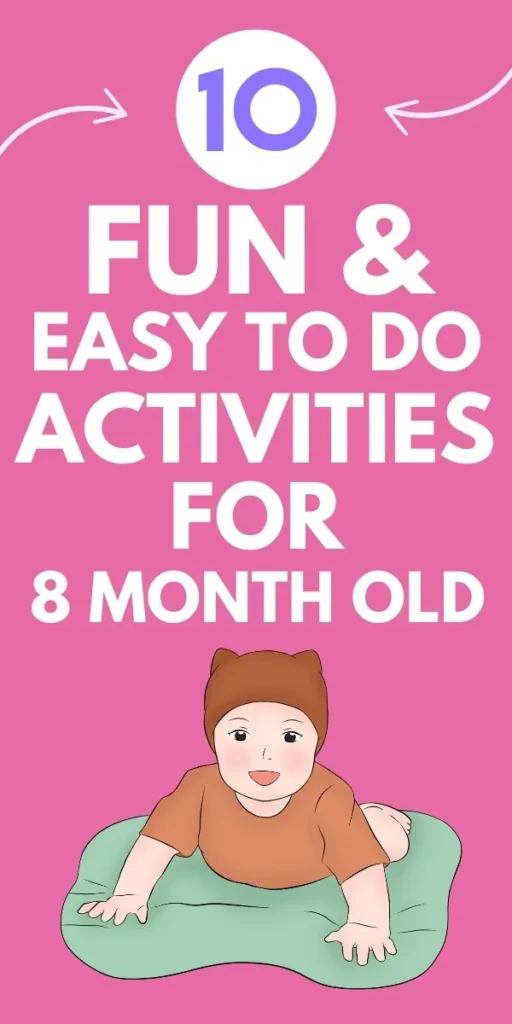
Conclusion: Fostering Curiosity and Independence
Remember, the key is to create a safe and stimulating space where your baby can explore at their own pace. By offering a variety of these engaging activities, you’ll be sparking their curiosity, independence, and overall development. Watch your little one blossom!
Also Read:
- 10 Montessori Parenting Tips for a Happy Child
- 20 Fun and Easy Activities for 1 Year Olds at Home
- 20 Fun and Easy Activities for 2 Year Olds at Home
- 20 Fun and Easy Activities for 3 Year Olds at Home
- 20 Fun and Easy Activities for 4 Year Olds at Home